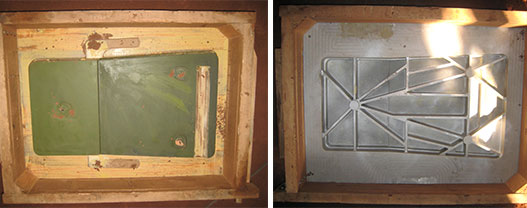Understanding the Sand Casting Process: A Step-by-Step Guide
Metal casting stands as a foundational and invaluable manufacturing technique for designers. It entails pouring molten metal into preformed molds, which solidify to form finished parts upon cooling. This method's capacity to shape metal sans machining facilitates the mass production of intricate, cost-effective, and durable components. Consequently, a plethora of casting processes exists, among which sand casting reigns supreme. This article delineates sand casting's prominence, elucidating its operational mechanics, comparative advantages, and contemporary industrial applications.
What is Sand Casting and How Does it Operate?

Introduction:Sand casting is a versatile casting method where sand is used to create molds for pouring liquid metal, resulting in the formation of intricate parts. This guide outlines the fundamental steps of sand casting, shedding light on its procedure and applications.
Step 1: Foundry Pattern Fabrication
Create a replica of the casting's exterior, known as the foundry pattern, typically made from wood or plastic.
Patterns are oversized to accommodate metal shrinkage during cooling.
Cores, internal mold inserts, may be utilized for intricate internal contours.
Step 2: Sand Mold Preparation
Form sand molds in two halves, each created around a pattern.
Top half (cope) and bottom half (drag) are packed into a flask around patterns.
Sand is firmly packed (rammed) to ensure mold integrity and remove loose particles.
Patterns are removed, leaving impressions in sand for metal flow.
Channels (gates/runners) and a pouring funnel (sprue) are created for metal ingress.
Step 3: Mold Clamping
Drag and cope halves are clamped together to form a complete mold.
Cores, if needed, are inserted into the mold before clamping.
Step 4: Metal Pouring
Desired metal is melted in a furnace and carefully poured/ladled into the mold's sprue.
Molten metal fills mold cavities defined by patterns.
Mold is allowed to cool, solidifying the metal.
Step 5: Shakeout and Cleaning
Sand is removed from the solidified metal casting via non-destructive means (shakeout).
Casting is refined by removing gating systems, runners, and any residual sand or core materials.
Excess material is trimmed, and the surface may be sanded/polished for desired finish.
Each part is inspected for defects and tested to ensure compliance with quality standards.
Advantages and Disadvantages of Sand Casting: Advantages:
Ability to produce parts of varying sizes and complexities.
Highly adaptable for mass production.
Compatible with a wide range of alloys.
Low equipment and setup costs with short lead times.
Disadvantages:
Porosity in metal leads to lower part strength.
Poor surface finish requires extensive cleaning.
Reduced dimensional accuracy due to metal shrinkage.
Cleaning process can be time-consuming, requiring secondary machining for low-tolerance parts.
Applications of Sand Casting:
Pistons, valves, impellers, and engine blocks.
Automotive, agricultural, and mining equipment parts.
Electronic components, gas/oil tanks, and medical devices.
Hardware, screws, nuts, and gears.
Conclusion:Sand casting, despite its limitations, remains a cost-effective and versatile manufacturing process suitable for a wide range of applications. Its ability to produce complex parts with relatively low setup costs makes it an integral part of modern manufacturing processes.
Dongrun Casting have 20000 square meters facility houses and 200 production & test equipment, From quotation and tooling design to casting and finished machining, we can work with you at every stage. We serves wide range of industries-from Fortune 500 corporations to small and midsize OEMs. Our products includes: Automotive&Trucking, Electric Utility & Communications, Metering System, Hydraulic Industry, Medical Devices, Lighting, Fuel and Gas Pressure, Furniture parts.
More Details : www.dongruncasting.com
